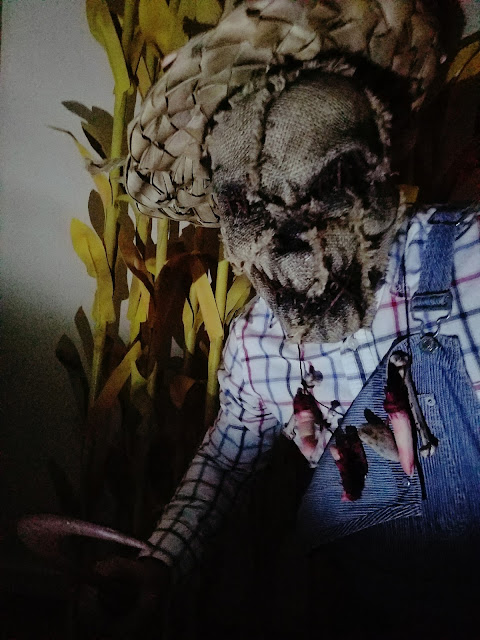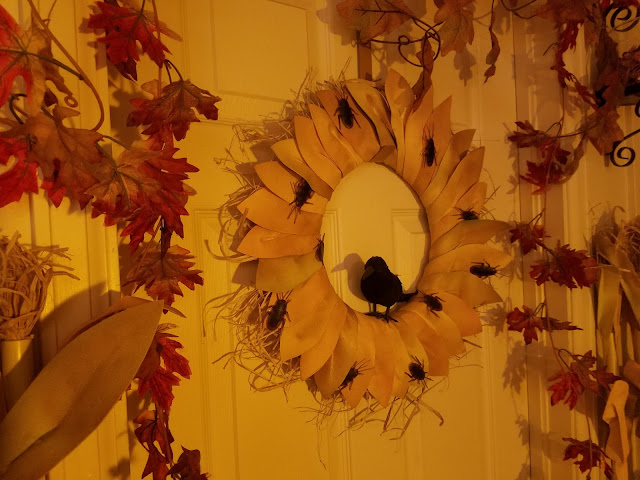$10 - $15 (based on 2016 prices)
Makes one mask
I made this prop as part of my costume for 2016’s haunt (see the hat that accompanied it here). To unify the color scheme, I used the same burlap cloth for each patch. To give the mask more visual interest, you could use scraps made from multiple colors of burlap and/or varying fabrics with different colors and patterns.
- One plastic pumpkin mask
- One 10 oz. can of interior/exterior, fast-drying spray paint in flat brown
- One to two yards of burlap
- One 4 oz. bottle of all-purpose tacky glue*
- One to two yards of dark-brown twine
- One 2 oz. bottle of acrylic paint in flat black*
1. On a newspaper-lined surface in a well-ventilated area, give the mask an even coat of brown spray paint. Although I only used one coat, you may want more depending on your desired coverage. Keep in mind, though, that this is the base coat and much of the paint will be covered by the burlap.
2. Cut a square of fabric from the burlap, cover an area on the mask with glue, and press the cloth down to conform to the mask’s contours. Leave about a one-inch boarder free for the following step. Repeat the process until the entire mask is covered in patches of burlap.
3. Once the glue has fully dried, sew the patches’ boarders together with the twine. While I found one inch enough, you may want to leave additional fabric during the previous step to give you more to work with.
4. Trim and fray the seams and along the mask’s edges. I found that a sheet of sandpaper helped create the level of distress I wanted.

5. Clean up the openings for the eyes, mouth, and nose. Here, too, the sandpaper works well to fray the fabric. If you find it easier to work with the mask without the mesh lining, remove it (you may want to do this at the very beginning before applying the spray paint).
6. Smudge black paint around the eyes, mouth, and nose to give the mask a smoky appearance. You may want to experiment with a scrap of burlap before applying the paint to the fabric.
7. Sew the eyes and mouth closed with the remaining twine. A haphazard pattern looks spookier, so do not over think your application. If you plan to wear the mask, try not to impede your vision with too much thread.
8. If you removed the mesh lining, reattach it to the mask and add any needed touch ups (e.g. additional fraying to the edges, a little more smudged paint around the eyes, or a few more stitches along the seams).
*You will not use the entire bottle’s content for this project.

























